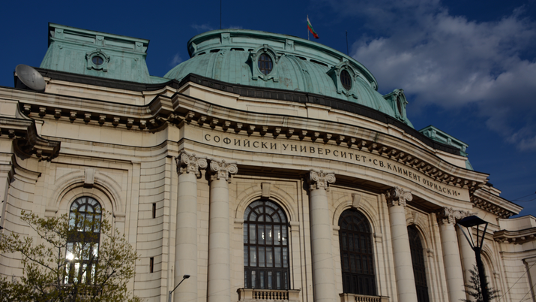Sofia 2024 Call for Papers
Old Church Slavonic is the last lingua sacra of Europe. Its advent was triggered by significant socio-political, cultural and religious circumstances — the evangelization of the hitherto pagan Slavonic communities in the 9th century, by turning them into the “People of the Book.” In fact, OCS was intended to become the ultimate vehicle for transmission and dissemination of Christianity in the Slavonic domain of the Byzantine Commonwealth. Thus it may be defined as a unique cultural phenomenon bound by the reception history of the Bible. The coinage of the specific template of philological practices inherent in the ensuing OCS scribal production was thus significantly impacted by the process of translation of the canonical Scriptural text into the mother tongue of the targeted neophytes. The historical development of philological patrimony of OCS is thus essentially different from that of the three “classical” Biblical languages, since they were molded according to the linguistic matrices of their respective forebears. While there were centuries-long scribal traditions in Hebrew, Latin and Greek that had existed prior to and entirely independently from the Biblical text, OCS literary conventions were the product of a totally different background. Contributions are sought exploring the unique intellectual landscape of reception history of the canonical Biblical text within the Slavonic intellectual domain, along with that of the parabiblical writings. Special emphasis is to be given to the question: why does the appreciation of Slavonic parabiblical heritage go far beyond its significance for Slavonic studies? Thus, scholars have maintained that, even though the Church Slavonic MSS containing witnesses to some ancient Judaeo-Christian writings may date from a relatively late period, they appear to be offspring of much earlier texts (originally in Hebrew and Aramaic, but also in Greek, as well as Syriac and Latin). Besides, for many of these compositions, their Vorlagen may be dated to the early Second Temple period. Hence the study of Slavonic parabiblical writings can contribute significantly to a better understanding of Judaism of the Hellenistic age and thus of the roots of Rabbinic Judaism, early Christianity, Gnosticism, and later mystical thought. Slavonic translations of Byzantine Chronographic accounts will also be treated. Not only are parabiblical written texts to be included within this purview, but also iconography and vernacular oral tradition (including “Folk Bible” compositions).
The overall research questions in this proposal have several different aspects to be taken into account. 1) Comparisons of particular topoi within Slavonic apocryphal heritage which are known to be attested in or based on earlier Jewish and/or Christian traditions. 2) More detailed analyses of the religious and ritual contexts of these topoi in parabiblical writings from the point of view of calendar, liturgy, etc., as a prerequisite for improved results in understanding the Slavonic texts. 3) Higher resolution consideration of the original language (e.g. Hebrew, Aramaic, Greek) of topoi later appearing in Slavonic. The parallel attestations of such topoi in their Slavonic contexts will allow the combined expertise of the research team to focus on common questions from differing perspectives.
Papers are invited on various aspects of parabiblical traditions, with special emphasis on Slavonic literary heritage, oral tradition and iconography. The aim will be to compare and contrast Slavonic texts with others (extant in Hebrew/Aramaic, Greek, Syriac, Latin, Romanian, Armenian, etc.) but scholars working in all of these fields are welcome to apply.
